-
Posts
1,718 -
Joined
-
Last visited
Content Type
Profiles
Forums
Gallery
Events
Posts posted by flying_dutchman2
-
-
-
1502 - Columbus begins 4th & last trip to "Indies"
1560 - Djerba - Turkish galleys defeat Christian force near Djerba, Tunisia
1678 - French admiral Jean d'Estrees' fleet runs aground on Aves-islands, Curacao
1689 - Battle of Bantry Bay, French & English naval battle
1749 - British parliament accepts Consolidation Act: fleet reorganization
1792 - Columbia River discovered & named by US Capt Robert Gray
1820 - Launch of HMS Beagle, the ship that took young Charles Darwin on his scientific voyage.
1833 - "Lady-of-the-Lake" strikes iceberg & sinks in N Atlantic; kills 215
1862 - Confederates scuttle CSS Virginia off Norfolk, VA
-
-
-
I am new to this technology & find it fascinating, so I am taking this in slowly and when I don't understand it I Google it. Marc
-
Hi,
Beautiful work and will be following this built with much interest.
I see you are building her with the plans from Dr. Gilbert McArdle. I am using Emke's plans and will be a hybrid POB. I am an intermediate builder so for me frames would be more difficult. I will do frames on one of Tasman's ships.
Marc
-
-
Great listings invauable, to Marc anxious to see Dutch listings as next project would be a dutch merchant ship either from kit being developed or scratch from Hovings book. Don
There were/are so many merchant ships/boats in and around The Netherlands. Every town on the water had one. One similar to the other.
I do have a list and descriptions but it is all in Dutch.
As you can see from my signature all ships will be from Hoving/Emke.
btw, Hans, a member here' has started a kit company with Dutch ships. Batavia is one and the Dordrecht that looks very similar like the Batavia. They were both in the same convoy. Once his kits become available I will purchase one or more.
Marc
-
-
-
Excellent job and as someone already said, the paint job is gorgeous. I've downloaded some plans of the ABN AMRO and will be making her a larger scale. This is still a year or 2 away. I want her large enough to make her R/C.
There are some build logs on Dutch sites that show her sailing in the water.
Marc
-
-
I am the intermediate builder and have the beginner's tools, Skil scroll saw, Alwin belt and disc sander from MicroMark and used drill press from Dremel. I does what I need to do. I never thought I would say this, but the more I read about it and look at other table saws, I like the Byrnes the best. You get what you pay for and that is excellence.
I know what I wrote in other threads about the price of these machines, but a person changes his mind.
http://www.vanda-layindustries.com/has several nice tools as well. One of the club members brought one to the meeting and it is quality. So I need to make more $$ on eBay and will buy the table saw. I feel it is the one item I will use the most.
I like the scroll saw and use it as a table saw with many improvised jigs and fences.
Gotta go to work.
Marc
-
Finally got some more work done on her. I had to figure out the shape of the bow and what the stern looked like.
The shape of the bow.
The bow with a template.
The part that is carved in the middle is the size of the piece. Will remove the side to even it out.
I use pins to keep the bow in place when I glue it to the rest of the structure. and here I show the drilling of a hole.
Glued together and the pins will keep it aligned.
Clamping everything.
- Salty Sea Dog, Omega1234, Piet and 3 others
-
 6
6
-
Perhaps the largest weakness of the book is that the editors assume the reader already has some knowledge of northern European and East Anglian history during the Middle Ages.
Instead of mentioning this, I would say that it is an advance book on the topic. This negativity when doing book reviews does not do any good. It doesn't tell the writer what he can improve.
Example. In grad school you couldn't just take soil biochemistry - there are pre-requisites such as soil science, soil taxonomy, soil chemistry. So on that note, this book reviewer should have said something like.
This is an "advanced" book where the reader has some "general" knowledge on the subject.
Just my 2 cents.
Marc
-
-
Allemachtig, that is a good looking model. Every detail is there and all perfect 9maybe too perfect.
Marc
-
As long as we are mixing up along the same lines, there will be no problem

As long as those lines do not get Babylonian proportions, we might Jan

Thanks for the vote of confidence. Will put up some more pictures of progress. Also I am going to order the rest of the wood. There are to people on eBay I have bought from before and I will get most of my material from them. They both have all Byrnes & Vandalay equipment. So I will get accurate material. The best part, they are not so expensive as some of the companies that advertise on here.
Marc
-
-
Marc,
Excuse me correcting, but it's nautiek.nl not nautik.nl ... mixing Dutch and German ... ? You speak to many foreign tongues!
Ooops, I wasn't thinking. The older I get the more I mix up the Dutch, German and English words. They say that the older you get the more you will revert to your native language and that will be Dutch for me. This is going to great when I will be in public and ask for directions.
Marc
-
Hello Marc. Am pulling up a chair to follow this progress even if a little late. Keep up the great modeling!
I really enjoyed also reading your construction of Yacht Mary, as currently am working on that same model. Have those same two books about Utrecht from Seawatch Publishing, and I find them very useful. Seems that Mamoli made mistakes with bow of Mary after reading those Seawatch books and doing own research about the Dutch statenjachts. Mary should have had a bow same to the Utrecht.
Brian
Hi Brian;
Plenty of room and it is nice that others like to build these type of ships.
When I started on the Mary I followed the directions and caught my mistake after I started reading more about Jachts. Thought of ripping it all off and doing it again. Didn't do that so decided on doing another on.
There are so many varieties of Jachts. Such as Herenjacht (Gentelman), Pavilioenjacht (pavilion), Statenjacht (State), Koninklijkejacht (Royal) and then there are oorlogs jachten (Tasman had one) and probably others I forgot to mention. They all are different sizes, one more gold ornamentation than the other, etc.
There is lots of information on these ships/boats unfortunately for you they are in Dutch. But if you need info, websites, just ask.
Marc
-
Anton,
I am on the list of the Dordrecht. The kit is about 400-450 Euro. Package to the USA will cost 26 Euro up to 2 kg and 36 Euro up to 5 kg, all insured. Possibly some import duties as well.
I am selling my complete Vintage Marklin (German) train on eBay. I just sent a 4 lbs 4-3-4 tender locomotive from Marklin to someone in NZ and the shipping by the post was $56.00. Sold the loc. for $100.00. To AU I sent another loc at 2 lbs and cost $30.00 shipping.
Hans is waiting for the rights to create the kit of the Batavia.
Other kits are Duyfken, the Walcheren which was a warship from the same period as the Zeven Provinciën and almost the same as the 7P. Some more as well.
Marc
- Tallshiptragic, Keith_W, mtaylor and 1 other
-
 4
4
-
The book by Hoving on the 17th Century Dutch Merchant Ships is very good. His son Emile did all the graphics in Photoshop and they are so realistic. The 24 sets of plans are very accurate and I plan to make several small boats. The one thing I was disappointed in is that the plans are not on CD. But then again it could be for copyright reason.
The ships of Abel Tasman has a CD of both ships and both in the scale of 1:50, 1:87.5, 1:100, 1:150 and the paper plans are 1:75. This is all in cm.
Marc
-
Little History.
This painting of a Dutch yacht flying its national ensign was rendered by Dionys van Dongen probably in the 1770s.
Yachting – It All Started in Holland in the 1500s -
As much as we hate to admit it, “yachting” really didn’t start with powerboats in but in sailboats built by the Dutch in the 1500s. The word “yacht” is from the Dutch word “jacht.” So, if you consider yourself a yachtsman you have a long and rich heritage to call your own. With so much water all around and so much wealth in 17th century, little wonder that the Dutch were the first to creating yachting as a sport. And for the same reasons, little wonder that Holland is still a major yacht builder.
The Dutch Started it All
Yacht (pronounced /ˈjɒt/, from Dutch/Low German jacht meaning hunting or hunt, compare Standard German/High German Jagd) was originally defined as a light, fast sailing vessel used by the Dutch navy to pursue pirates and other transgressors around and into the shallow waters of the Low Countries. They were also used for non-military governmental roles such as customs duties and delivering pilots to waiting ships. The latter use attracted the attention of wealthy Dutch merchants who began to build private yachts so they could be taken out to greet their returning ships.
Fleet Parades Begin
Soon wealthy individuals began to use their 'jachts' for pleasure trips. By the start of the 17th century 'jachts' came in two broad catergories- speel-jachts for sport and oorlog-jachts for naval duties. By the middle of the century large 'jacht' fleets were found around the Dutch coast and the Dutch states organised large 'reviews' of private and war yachts for special occasions, thus putting in place the groundwork for the modern sport of yachting.
Jachts of this period varied greatly in size, from around 40 ft (12 m) in length to being equal to the lower classes of the ship of the line. All had a form of fore/aft gaff rig with a flat bottom and lee boards to allow operations in shallow waters.
Hail, Britannia
Charles II of England spent part of his time in exile during the period of the Commonwealth of England in the Netherlands and became keen on sailing. He returned to England in 1660 aboard a Dutch yacht. During his reign Charles commissioned 24 Royal Yachts on top of the two presented to him by Dutch states on his restoration.
As the fashion for yachting spread throughout the English aristocracy yacht races began to become common. Other rich individuals in Europe built yachts as the sport spread. Yachting therefore became a purely recreational form of sailing with no commercial or military function.
For instance, in the Anglo-Saxon period Athelstan (C. 930—Ed.) had presented to him by the king of Norway a magnificent royal vessel, the sails of which were purple and the head and deck wrought with gold, apparently a kind of state barge. Elizabeth had one, and so has every English sovereign since. During her reign a pleasure ship was built (1588) at Cowes, so that the association of that place with the sport goes back three hundred years.
In 1660 Charles U. was presented by the Dutch with a yacht named the " Mary," until which time the word "yacht" was unknown in England. Th» Merrie Monarch was fond of sailing, for he designed a yacht of 25 tons called the " Jamie," built at Lambeth in 1662, as well as several others later on. In that year the "Jamie" was matched for £100 against a small Dutch yacht, under the duke of York, from Greenwich to Gravesend and back, and beat her, the king steering part of the time—apparently the first record of a yacht match and of an amateur helmsman.
If you read this far, thank you.
Marc



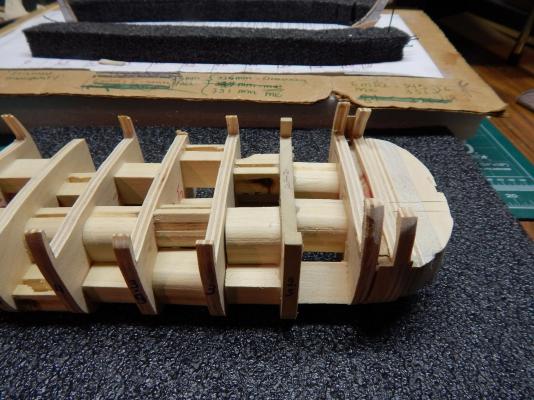
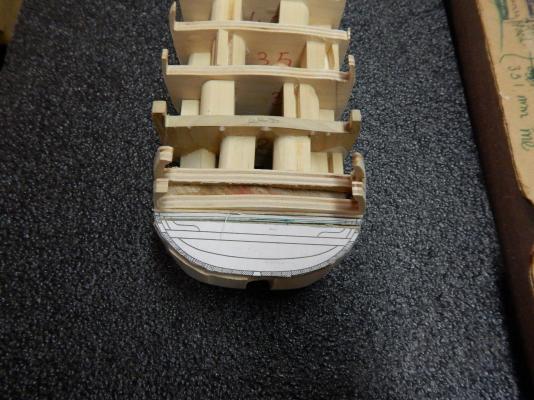
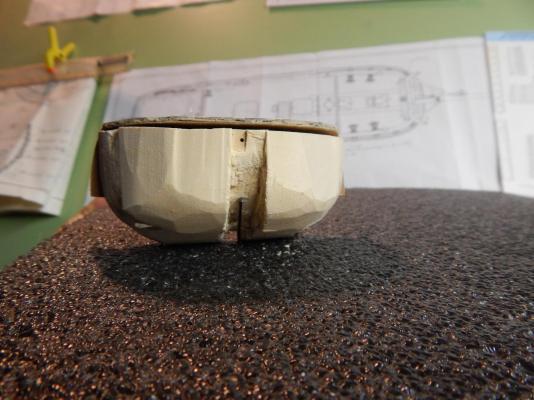
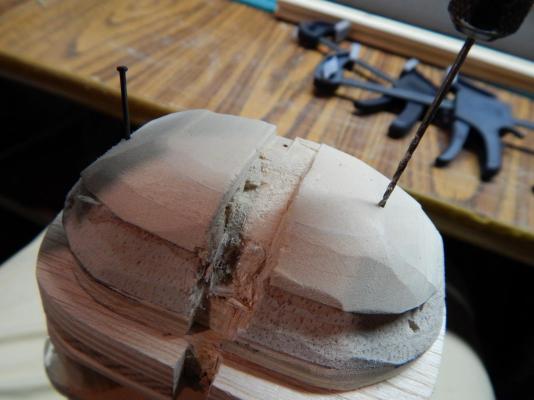
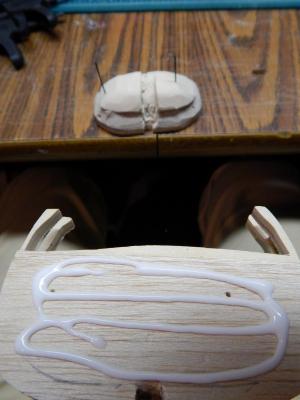
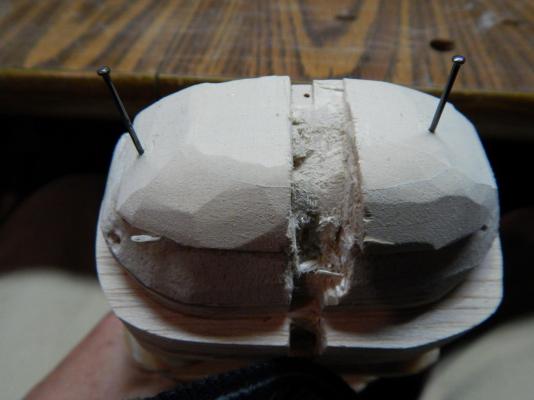
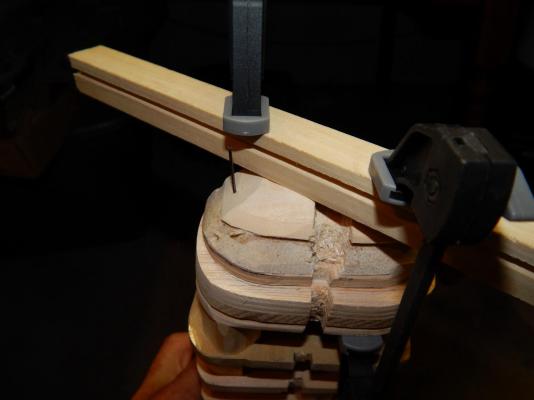
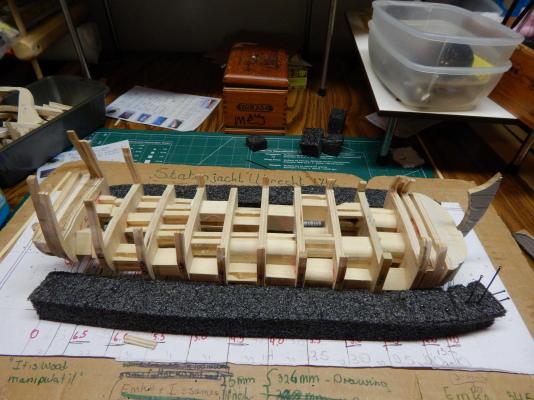
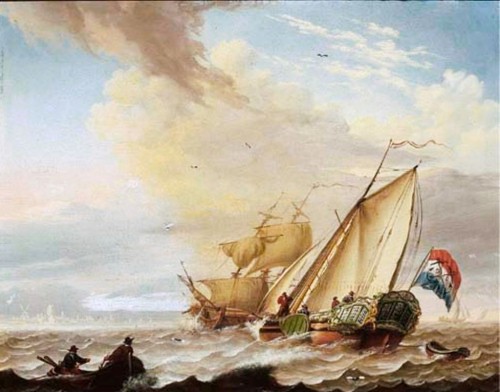
Gripen 1591 by NAZGÛL (Matti)
in - Build logs for subjects built 1501 - 1750
Posted
Matti;
Looking very good. Especially because you do this from your own drawings.
Different question. Were the Duyfken and the Eendracht the same type of ship?
Thanks
Marc